If you are looking for a place to witness the majestic elephants in their natural habitat, then Muthanga Wildlife Sanctuary is the perfect destination for you. Located in the Wayanad district of Kerala, this sanctuary is home to a rich and diverse bio-diversity, including tigers, leopards, deer, bears, monkeys, birds, orchids, bamboo, and more. Muthanga Wildlife Sanctuary is also part of Project Elephant, a conservation initiative by the Government of India to protect and manage the elephant population and habitat in the country.
Muthanga Wildlife Sanctuary offers a variety of attractions and activities for visitors, such as jeep safari, wildlife spotting, forest exploration, trekking, camping, bird watching, and more. Whether you are a solo traveller, a couple, a family, or a group, you will find something to suit your interests and preferences in this sanctuary. You can also choose from a range of accommodation options, from inspection bungalow to eco hut, depending on your budget and comfort level.
In this article, we will provide you with a comprehensive guide to Muthanga Wildlife Sanctuary, covering everything you need to know before you plan your trip. We will also share some tips and recommendations to make your visit more enjoyable and memorable. So, read on and discover the elephant haven of Wayanad, Kerala.
Jeep Safari
One of the best ways to experience the wildlife and nature of Muthanga Wildlife Sanctuary is by taking a jeep safari. A jeep safari is a thrilling and adventurous activity that takes you through the dense and rugged forest, where you can spot various animals and plants. You will be accompanied by a guide and a driver, who will explain the features and facts of the sanctuary, and also ensure your safety and comfort.
The jeep safari is available from 7 am to 10 am and from 3 pm to 5 pm, and costs Rs. 300 per person. You can book your safari at the entrance of the sanctuary, or online through the official website of the sanctuary. The safari lasts for about an hour, and covers a distance of about 15 km. You can also request for a longer or shorter safari, depending on your availability and interest.
The jeep safari is a great opportunity to witness the elephants in their natural habitat, as they roam, graze, bathe, and play in the forest. You can also see other animals, such as tigers, leopards, deer, bears, monkeys, and birds, if you are lucky and quiet. The forest is also home to a variety of flora, such as orchids, bamboo, teak, rosewood, and more. The jeep safari is a must-do activity for anyone who loves wildlife and adventure.
Wildlife and Flora
Muthanga Wildlife Sanctuary is a biodiversity hotspot, with a rich and diverse wildlife and flora. The sanctuary is spread over an area of 344.44 sq km, and is part of the Nilgiri Biosphere Reserve, which is one of the largest and most important conservation areas in India. The sanctuary is also part of Project Elephant, a conservation initiative by the Government of India to protect and manage the elephant population and habitat in the country.
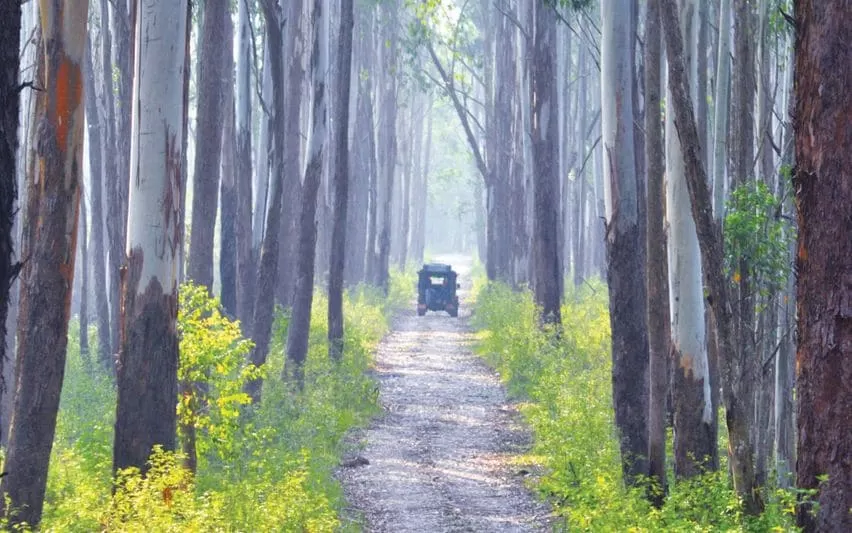
The sanctuary is home to more than 200 elephants, which are the main attraction and pride of the sanctuary. The elephants are free to roam and migrate across the sanctuary, and can be seen in large herds or solitary. The elephants are also very friendly and gentle, and often interact with the visitors. The sanctuary also hosts other animals, such as tigers, leopards, deer, bears, monkeys, and birds, which are rare and endangered. Some of the notable species are the Malabar giant squirrel, the Nilgiri langur, the sloth bear, the sambar, the spotted deer, the barking deer, the mouse deer, the gaur, the wild boar, the wild dog, the jungle cat, the civet, the mongoose, the peacock, the hornbill, the woodpecker, the kingfisher, and more.
The sanctuary is also home to a variety of flora, which are unique and endemic to the region. The forest is mainly composed of moist deciduous and semi-evergreen trees, such as teak, rosewood, bamboo, sandalwood, and more. The forest also has a rich undergrowth of shrubs, herbs, grasses, and climbers, which provide food and shelter for the animals. The forest also boasts of a stunning display of orchids, which are the most diverse and beautiful flowers in the world. Some of the orchids found in the sanctuary are the Vanda, the Dendrobium, the Aerides, the Cymbidium, and more.
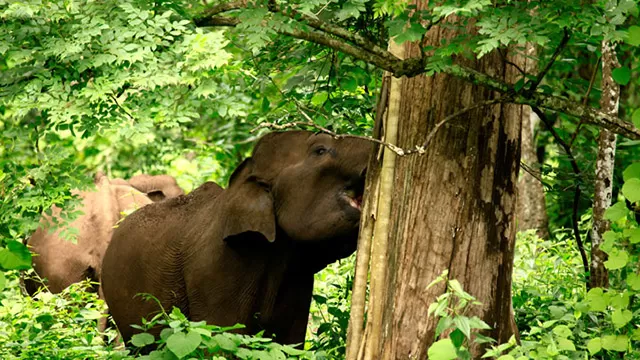
Muthanga Wildlife Sanctuary is a paradise for nature and wildlife lovers, who can learn and appreciate the beauty and diversity of the forest. The sanctuary also provides a vital role in conserving and protecting the wildlife and flora, which are threatened by habitat loss, poaching, and human-animal conflict. The sanctuary also contributes to the ecological balance and climate regulation of the region, by providing oxygen, water, and soil.
Accommodation
If you want to stay close to nature and wildlife, then Muthanga Wildlife Sanctuary offers a range of accommodation options for you. You can choose from the following options, depending on your budget and comfort level:
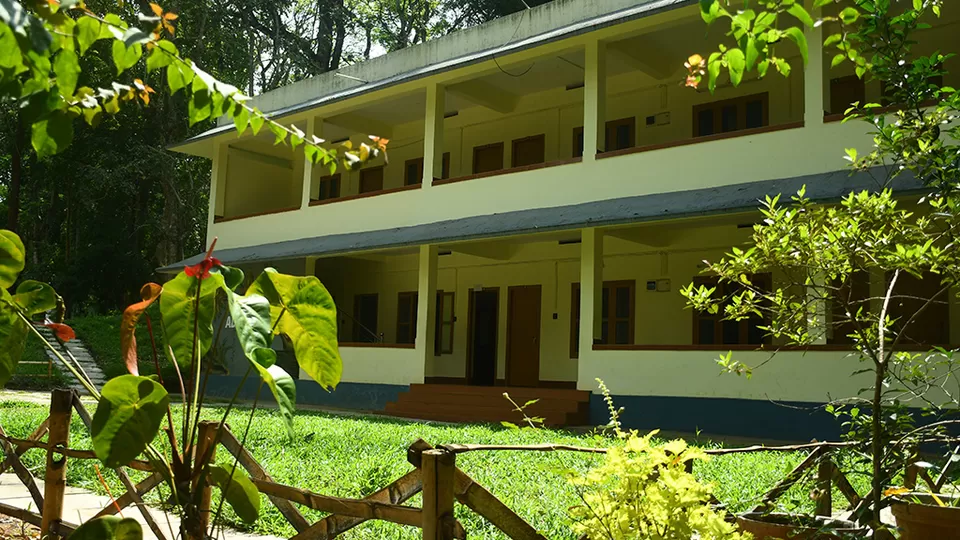
Inspection Bungalow:
This is a colonial-style bungalow, located inside the sanctuary, which offers a panoramic view of the forest and the wildlife. The bungalow has four rooms, with attached bathrooms, and can accommodate up to 12 people. The bungalow also has a dining hall, a kitchen, a veranda, and a garden. The bungalow is managed by the forest department, and costs Rs. 2000 per night. You can book your stay at the entrance of the sanctuary, or online through the official website of the sanctuary.
Forest Wood House:
This is a wooden cottage, located inside the sanctuary, which offers a cozy and rustic experience. The cottage has two rooms, with attached bathrooms, and can accommodate up to six people. The cottage also has a living room, a kitchen, and a balcony. The cottage is managed by the forest department, and costs Rs. 1500 per night. You can book your stay at the entrance of the sanctuary, or online through the official website of the sanctuary.
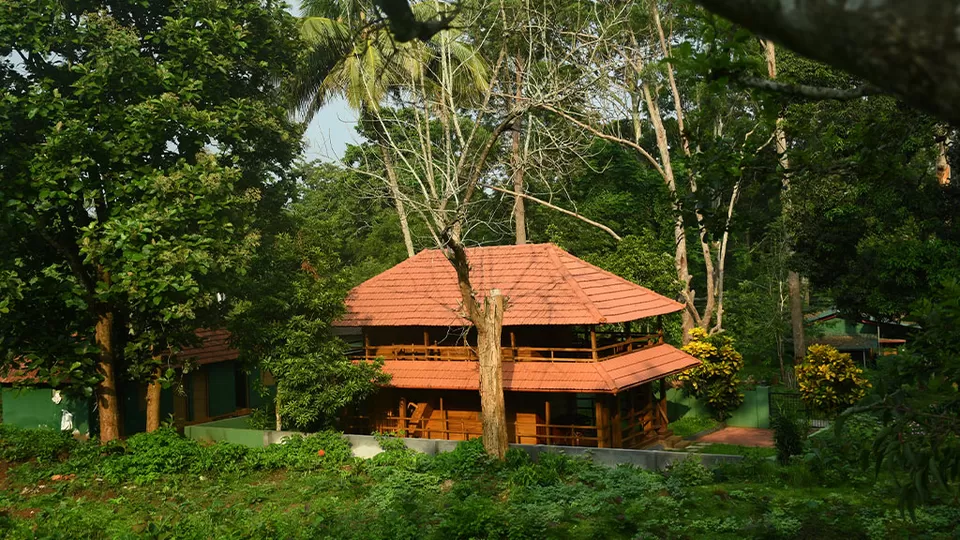
Eco Hut:
This is a bamboo hut, located near the entrance of the sanctuary, which offers a simple and eco-friendly experience. The hut has one room, with a common bathroom, and can accommodate up to two people. The hut also has a porch, and a hammock. The hut is managed by the forest department, and costs Rs. 500 per night. You can book your stay at the entrance of the sanctuary, or online through the official website of the sanctuary.
Serambi:
This is a traditional Kerala-style house, located near the entrance of the sanctuary, which offers a cultural and comfortable experience. The house has four rooms, with attached bathrooms, and can accommodate up to 16 people. The house also has a dining hall, a kitchen, a courtyard, and a garden. The house is managed by the forest department, and costs Rs. 2000 per night. You can book your stay at the entrance of the sanctuary, or online through the official website of the sanctuary.
Dormitory:
This is a large hall, located near the entrance of the sanctuary, which offers a budget and basic experience. The hall has 20 beds, with a common bathroom, and can accommodate up to 20 people. The hall also has a locker, a fan, and a light. The hall is managed by the forest department, and costs Rs. 100 per night. You can book your stay at the entrance of the sanctuary, or online through the official website of the sanctuary.
All the accommodation options provide bedding, towels, toiletries, and drinking water. They also provide food, either cooked or raw, depending on your preference. You can also bring your own food, or order from nearby restaurants. However, you are advised to avoid alcohol, tobacco, and non-vegetarian food, as they are prohibited inside the sanctuary. You are also advised to follow the rules and regulations of the sanctuary, such as maintaining silence, avoiding littering, respecting the wildlife, and following the instructions of the staff.
Getting There
Muthanga Wildlife Sanctuary is easily accessible from different locations, by various modes of transport. You can choose the best option for you, depending on your convenience and budget. Here are some of the ways to get to the sanctuary:
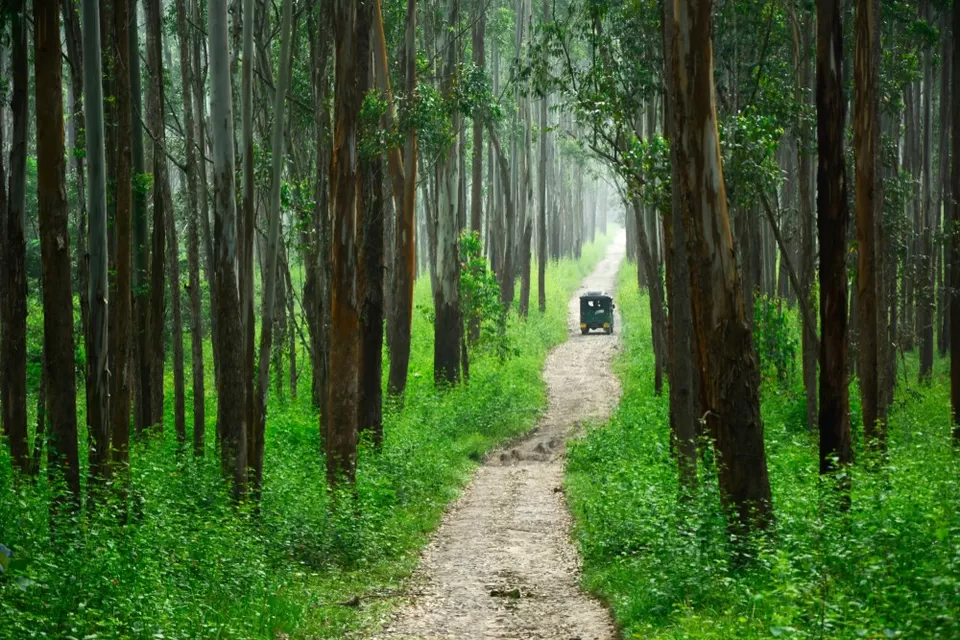
By Train:
The nearest railway station to the sanctuary is Kozhikode, which is about 110 km away. You can take a train from any major city in India, such as Delhi, Mumbai, Chennai, Bangalore, etc., to Kozhikode. From there, you can take a bus, a taxi, or a private vehicle to the sanctuary, which will take about two hours.
By Air:
The nearest airport to the sanctuary is Calicut International Airport, which is about 120 km away. You can take a flight from any major city in India, or from some international destinations, such as Dubai, Muscat, Singapore, etc., to Calicut. From there, you can take a bus, a taxi, or a private vehicle to the sanctuary, which will take about two and a half hours.
By Bus:
The nearest bus station to the sanctuary is Sulthan Bathery, which is about 15 km away. You can take a bus from any major city in Kerala, such as Kochi, Thiruvananthapuram, Kozhikode, etc., to Sulthan Bathery. From there, you can take a local bus, a taxi, or a private vehicle to the sanctuary, which will take about 20 minutes.
By Road:
The sanctuary is well-connected by road, and can be reached by car, bike, or bicycle. The sanctuary is located on the NH 212, which connects Kozhikode and Mysore. The sanctuary is about 100 km from Kozhikode, and about 120 km from Mysore. You can also take the SH 17, which connects Sulthan Bathery and Gundlupet. The sanctuary is about 40 km from Gundlupet. You can enjoy the scenic and smooth drive to the sanctuary, and also stop by some of the attractions along the way, such as Edakkal Caves, Banasura Sagar Dam, Chembra Peak, etc.
Frequently Asked Questions
Here are some of the frequently asked questions that you may have about Muthanga Wildlife Sanctuary, and the answers to them:
Q: What are the timings and entry fee of the sanctuary?
A: The sanctuary is open from 6 am to 6 pm, and the entry fee is Rs. 10 per person, and Rs. 50 per vehicle.
Q: How can I book a jeep safari, and what is the cost and duration of the safari?
A: You can book a jeep safari at the entrance of the sanctuary, or online through the official website of the sanctuary. The cost of the safari is Rs. 300 per person, and the duration of the safari is about an hour.
Q: How can I book an accommodation, and what are the options and prices of the accommodation?
A: You can book an accommodation at the entrance of the sanctuary, or online through the official website of the sanctuary. The options and prices of the accommodation are as follows:
Inspection Bungalow: Rs. 2000 per night, four rooms, 12 people
Forest Wood House: Rs. 1500 per night, two rooms, six people
Eco Hut: Rs. 500 per night, one room, two people
Serambi: Rs. 2000 per night, four rooms, 16 people
Dormitory: Rs. 100 per night, 20 beds, 20 people
Q: What are the rules and regulations of the sanctuary, and what are the do’s and don’ts of the sanctuary?
A: The rules and regulations of the sanctuary are as follows:
- Maintain silence and avoid disturbing the wildlife
- Avoid littering and dispose of the waste properly
- Respect the wildlife and do not feed, touch, or harm them
- Follow the instructions of the guide and the driver
- Do not smoke, drink, or eat non-vegetarian food inside the sanctuary
- Do not carry any weapons, firecrackers, or inflammable materials inside the sanctuary
- Do not venture out of the designated areas or trails
- Do not take any plants, animals, or artifacts from the sanctuary
- Carry a valid identity proof and a confirmation voucher
- Inform the staff in case of any emergency or problem
Q: What are the other attractions and activities near the sanctuary, and how can I reach them?
A: The other attractions and activities near the sanctuary are as follows:
Edakkal Caves: These are ancient rock shelters, with prehistoric carvings and paintings, located about 20 km from the sanctuary. You can reach them by bus, taxi, or private vehicle.
Banasura Sagar Dam: This is the largest earth dam in India, and the second largest in Asia, located about 40 km from the sanctuary. You can reach it by bus, taxi, or private vehicle.
Chembra Peak: This is the highest peak in Wayanad, and a popular trekking destination, located about 50 km from the sanctuary. You can reach it by bus, taxi, or private vehicle.
